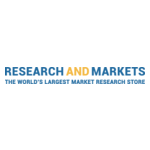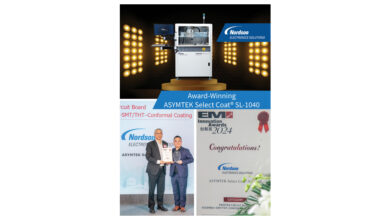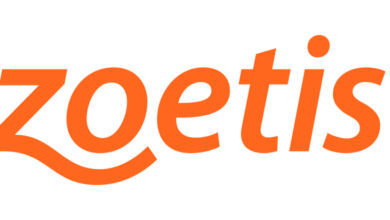The Worldwide Transcriptomics Industry is Expected to Reach $9.4 Billion by 2027 – ResearchAndMarkets.com

DUBLIN–(BUSINESS WIRE)–The “Global Transcriptomics Market Size, Share & Industry Trends Analysis Report By Technology, By Application, By Component, By Regional Outlook and Forecast, 2021-2027” report has been added to ResearchAndMarkets.com’s offering.
The Global Transcriptomics Market size is expected to reach $9.4 billion by 2027, rising at a market growth of 7.6% CAGR during the forecast period.
Transcriptomics is the study of RNA transcripts that depends on knowledge of next-generation sequencing technologies, which need RNA to be transcribed into complementary DNA before being sequenced. Microarrays and q PCR are among the technologies used. In addition, Microarrays are one of the most widely used tools in research labs. Quantitative reverse transcription, or q PCR, is a technique for detecting the presence and quantity of RNA by turning it into cDNA. It is named reverse transcription since it is carried out with the help of a polymerase chain reaction.
Microarrays, RNA sequencing, real-time polymerase chain reaction, RNA interference, expressed sequence tag (EST)-based technologies, SAGE, and other methods have been developed for transcriptome study. To study the quantity and sequences of RNA in a sample, RNA sequencing employs next-generation sequencing. Additionally, Microarray is a technique that detects gene expression in thousands of samples at once.
The primary difference between RNA-sequencing and microarray is that RNA-sequencing recognizes every transcript in a sample, whereas microarray uses hybridization to detect just pre-set transcripts or genes. To identify and analyze a short sequence of RNA or DNA, the polymerase chain reaction method is used to create various copies of a single gene. Moreover, scientists can study diseases at the genome level using these tools. It also aids in the development of new clinical biomarkers, the identification of various molecular disorders, and the evaluation of various medications.
Some of the growth catalysts for the overall industry are a surge in demand for personalized medicine, increased pharmaceutical and biotechnology R&D expenditure, government investment for omics, rise in RNA sequencing applications, and development of new transcriptomics products by a large number of key players. In addition, the increased focus on biomarker identification and the massive demand for transcriptome in R&D activities has resulted in a spike in transcriptome output. According to the National Human Genome Research Institute, which is part of the National Institutes of Health (NIH), the Mammalian Gene Collection Initiative and the Mouse Transcriptome Project were two programs that generated transcriptome resources for researchers all over the world. These two models are critical for the study of human biology, which is expected to drive market expansion.
Market driving Factors:
The massive demand for personalized medicine
Personalized medicine has entered conventional clinical practice and is transforming how many diseases are detected, classified, and treated. In addition, it has become a fundamental focus of research in the healthcare business. Oncology is one area where these gains are particularly noticeable.
The number of tailored medications, therapies, and diagnostic items has grown since 2006, according to the Personalized Medicine Coalition report (2017), and this trend is projected to continue in the coming years. In addition, the demand for tailored treatment and RNA sequencing applications in transcriptomics is constantly growing. The expanding interest in outsourcing services, as well as the growing focus on biomarker research and toxicogenomic, are the key trends of the overall market.
Rising preference for biomarkers discovery
The identification of biomarkers, as well as their clinical uses, has improved drug discovery and development techniques for assessing medication toxicity and efficacy. In addition, biomarkers for diseases such as cancer, cardiovascular disease, and neurological diseases are crucial in gaining a better knowledge of the disease route and progression. The microarray technology employed in transcriptome analysis holds the possibility of allowing for widespread genetic disease research. Moreover, it also aids in the development of novel clinical biomarkers, the identification of novel molecular abnormalities, and therapeutic efficacy research. Tuberculosis is a global issue that affects millions of people, necessitating more efficient diagnosis, treatment response monitoring, and the development of more effective pharmacological therapies and vaccines.
Marketing Restraining Factor:
The scarcity of useful bioinformatics tools
For transcriptomic research, microarray experiments generate massive volumes of data. As a result, researchers frequently confront difficulties in interpreting results and utilizing available computational resources to handle data. In addition, transcriptomics data from RNA sequencing has low genome coverage and strong amplification bias, making data interpretation difficult, particularly without effective bioinformatics tools.
Scope of the Study
Market Segments Covered in the Report:
By Technology
- q PCR
- Microarrays
- Sequencing Technology
By Application
- Drug Discovery
- Diagnostics & Disease Profiling
- Others
By Component
- Consumables
- Instruments
- Software
- Services
By Geography
- North America
- US
- Canada
- Mexico
- Rest of North America
- Europe
- Germany
- UK
- France
- Russia
- Spain
- Italy
- Rest of Europe
- Asia Pacific
- China
- Japan
- India
- South Korea
- Singapore
- Malaysia
- Rest of Asia Pacific
- LAMEA
- Brazil
- Argentina
- UAE
- Saudi Arabia
- South Africa
- Nigeria
- Rest of LAMEA
Key Market Players
- Fluidigm Corporation
- Promega Corporation
- General Electric (GE) Co.
- Merck & Co., Inc.
- Thermo Fisher Scientific, Inc.
- Illumina, Inc.
- Bio-Rad Laboratories, Inc.
- Agilent Technologies, Inc.
- F. Hoffmann-La Roche Ltd.
- Qiagen N.V.
For more information about this report visit https://www.researchandmarkets.com/r/ekgc84
Contacts
ResearchAndMarkets.com
Laura Wood, Senior Press Manager
[email protected]
For E.S.T Office Hours Call 1-917-300-0470
For U.S./CAN Toll Free Call 1-800-526-8630
For GMT Office Hours Call +353-1-416-8900





